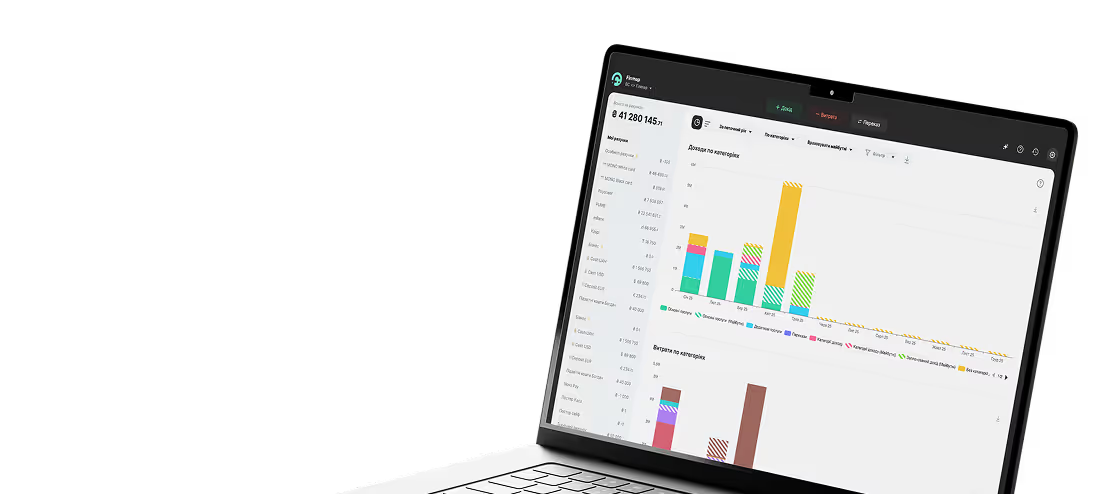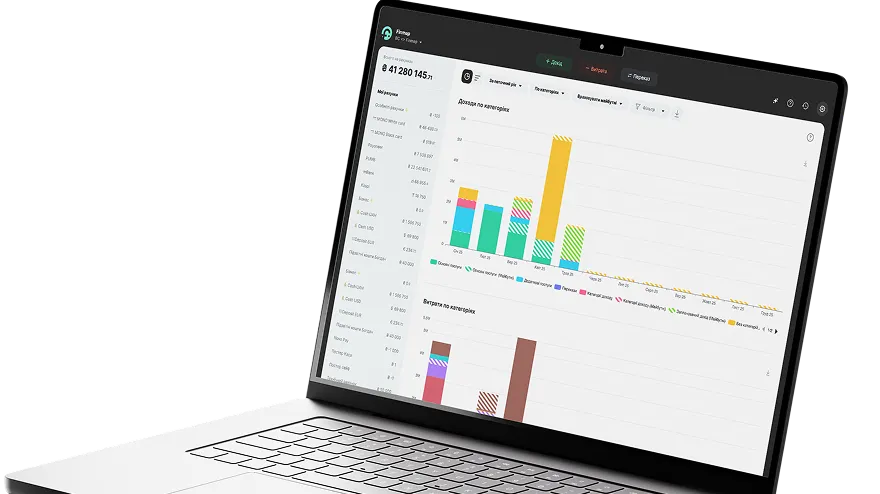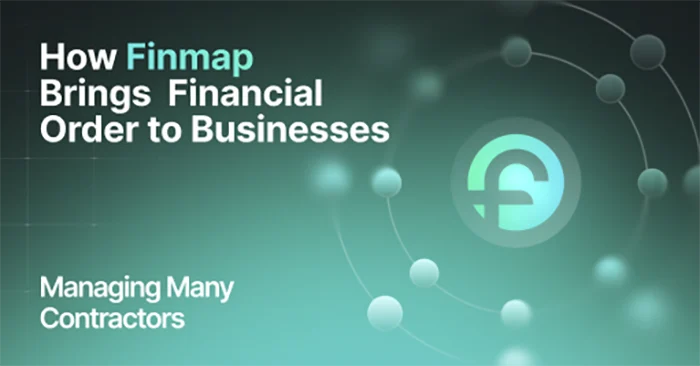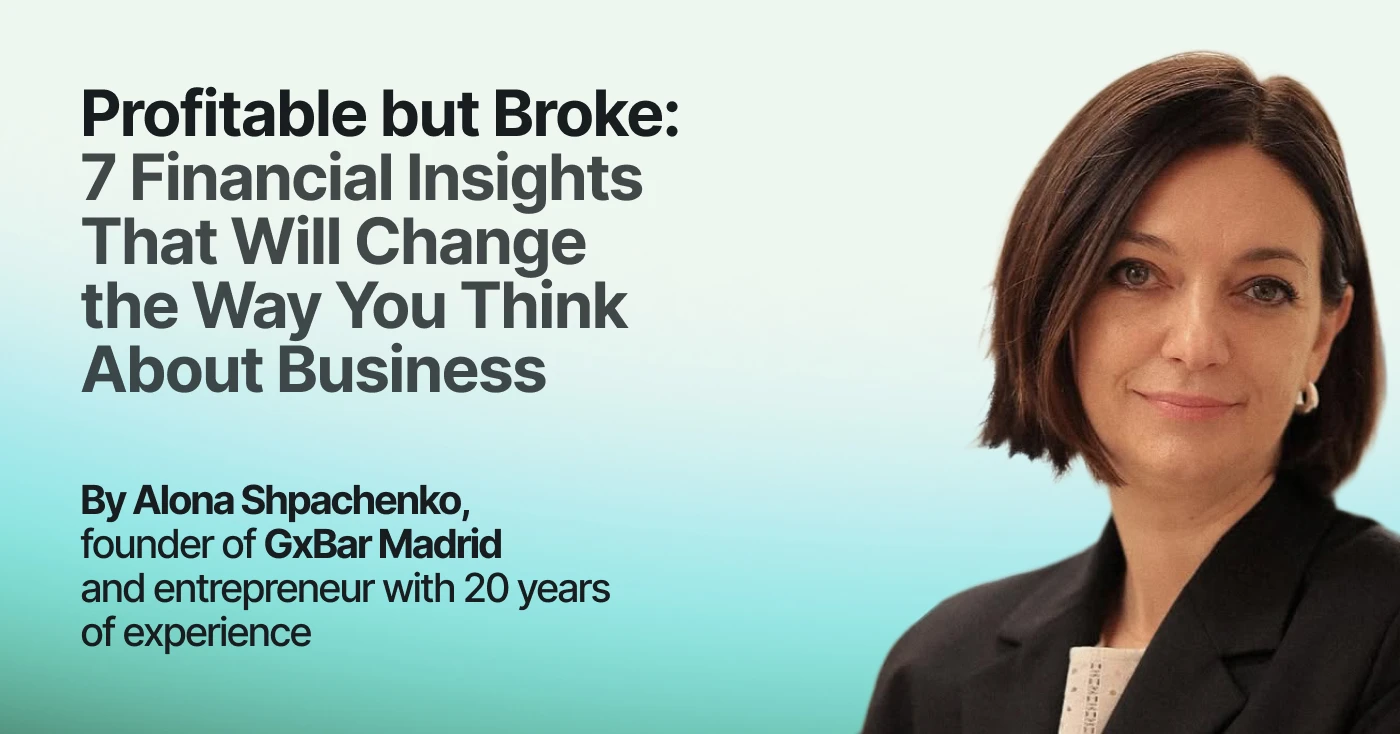Finmap Instead of Excel: How the Marketing Agency I AM IDEA Saved Time and Stopped Losing Money
How many more months are you willing to work “at zero” and comfort yourself with growing lead numbers?
In spreadsheets, everything looks fine — new clients, more projects, movement. But by the end of the year — a red line and an empty account.
This is a case about a marketing agency that took an honest look at its numbers, got out of the red, and stopped playing the “we’re growing” game. Not a motivational fairy tale — but a step-by-step breakdown of how chaos made of small payments, freelancers, and broken formulas can be turned into a managed P&L, transparent profitability, and time that finally works toward scaling.
Spoiler: Excel doesn’t save you here.
About the Client
Alina is the founder of the marketing agency I AM IDEA, which works with Ukrainian businesses in Ukraine and diaspora-based companies abroad. The team operates as an external marketing department: not just “doing advertising,” but diving into business processes, building structure, and taking responsibility not only for results but also for process management.
The agency deliberately avoids a narrow niche — it works with different business models and selects clients based on their level of business maturity: from business architecture and monetization model to the presence of a sales department and financial management — factors that directly affect the long-term effectiveness of cooperation.
The business model is modular: clients can engage either for one-time services or for ongoing, system-based management.
The Problem
The agency model looks attractive during growth, but it’s financially demanding: dozens of small transactions per project, partial payments to freelancers, reconciliations, and balance control. All of this multiplied by manual tracking in spreadsheets leads to cash gaps, delayed payments, and the absence of a clear picture of profitability.
1. How It Felt in Operations
- Manual data entry + unstable formulas → errors and wasted time.
It was hard to manage in spreadsheets because I had to create all the formulas myself. — Alina, founder of the marketing agency I AM IDEA
- Many small payments per project → control became scattered.
The agency model is challenging because there are so many payments for a single project. You have to pay freelancers and so on. It’s not one salary for one person, but several smaller payments. — Alina, founder of the marketing agency I AM IDEA
- Cash gaps as a result of poor forecasting and cash flow management (not just categorization).
We faced cash gaps because assigning categories to finances is one thing, but managing them is another. — Alina, founder of the marketing agency I AM IDEA
- Founder overload: everything depended on the owner, analytics was occasional.
It was difficult to manage such a large number of figures across different projects. — Alina, founder of the marketing agency I AM IDEA
Problem Map
2. Where the Agency Model Breaks Without a System
The agency receives a fixed payment twice a month, but payouts to freelancers and contractors occur at different times and in smaller portions.
Without a centralized project-based P&L and automatic categorization rules, it’s difficult to see the real margin and identify the moment when there seems to be enough money in the account — but the cash flow is already “in the red.”
Points of Control Loss
3. Organizational Problems
- Information was stored in the founder’s head → the team lacked transparency and constantly asked whether payments had arrived.
- Expense control was reactive, not preventive: analyzing “after the fact” no longer saved the month.
- Focus shifted to operations instead of growth: an increase in clients didn’t translate into healthy profitability.
How Finmap Was Implemented
Unlike the typical scenario where automation is introduced after a painful cash gap, Alina’s decision was conscious and planned in advance. Financial control is part of the founder’s DNA — a mindset shaped during her previous career in management roles.
I was just waiting for the moment when I could pay for the subscription, because even before connecting, I had visited the Finmap website many times and knew the annual rate in advance. There wasn’t a turning point or special situation — I was consciously moving toward this from the very beginning. — Alina, founder of the marketing agency I AM IDEA
Why Finmap?
Alina’s background is all about structure: process building, management reporting, and control. That’s why the tool was chosen for its ability to sustain and organize processes.
My background is like this: I worked at a law firm, have a degree in law, built my career there, and became a deputy director — that’s where I learned business processes and financial reporting. I knew about different automation tools, so it was obvious to me that I would use financial management software, and Finmap turned out to be the best solution. — Alina, founder of the marketing agency I AM IDEA
The Logic Behind the Decision
Now I’ve moved to the PRO plan. — Alina, founder of the marketing agency I AM IDEA
How Finmap Was Implemented
Roles and Areas of Responsibility During Implementation
What Helped Make the Decision Without a “Turning Point”
- Management background: greater trust in numbers than in intuition.
- Understanding of the agency model: many small transactions = high demands on the system.
- Founder’s time priority: a systematic tool = less manual routine.
How Finmap Solved the Problems
Finmap freed the founder from manual bookkeeping and provided a unified money management system — from project cash flows to team payments. The key was the combination of automation, P&L, and the Projects feature.
The result — transparent margins, less chaos, and faster decision-making.
Now all payments come in, and I assign categories. Yesterday, I upgraded to the PRO plan to have both P&L and automation rules — I’d wanted that for a long time, so now it’ll make my work even easier. I use P&L and Projects the most — they’ve really saved me time, and I can check any information by filters or categories at any moment. — Alina, founder of the marketing agency I AM IDEA
1. Pain → Solution in Finmap
We’ve freed up time: now everyone can check the numbers they need on their own, no one distracts me, and it’s become easier to analyze the data. — Alina, founder of the marketing agency I AM IDEA
2. Daily Work in the System
- Payment reception → automatic entry into the feed → category assignment.
- Project-based accounting → linking all small payments to a specific project → visibility of actual cost.
- P&L → reviewing profitability by months/projects → making decisions on pricing and expenses.
- Team access → managers can see the numbers they need → fewer questions to the founder.
- (Pro) Automation rules → ability to set up typical payment patterns → even less manual work.
3. How Finmap Helped Overcome Cash Gaps
- All operations in one place → no more gap between reality and spreadsheets.
- Expense linking to projects → accurate cost calculation instead of “estimates.”
- P&L by periods → early visibility of “red” months.
- Category filters → detection of margin “leaks” (small and recurring expenses).
- Regular payments in the operations calendar → payouts are planned based on real cash-in.
4. The Role of Pro Features
- P&L (extended) — deeper margin insights by clients, channels, and months.
- Automation rules — planned reduction of manual steps, creating stable “tagging” for typical transactions.
- Quick filters and team access — team independence without bottlenecks.
When you have Finmap, you instantly understand what’s going on, you can analyze expenses, avoid overspending, and it was thanks to Finmap that I managed to get out of the red. — Alina, founder of the marketing agency I AM IDEA
Insights from Alina
1. Money ≠ Sense of Growth
The number of leads and projects doesn’t equal profit. You need system, not intuition.
And what’s most interesting — when you’re just starting out, it feels like everything is growing: things are moving, clients are increasing, everything’s great. But the numbers tell a different story. — Alina, founder of the marketing agency I AM IDEA
Action: Review P&L every month and make decisions based on margin, not feelings.
2. Early Financial Tracking Saves You from Painful Reconciliations and Self-Deception
The earlier you start systematic financial tracking, the fewer surprises you’ll have at the end of the year.
I didn’t hesitate to invest in it right away, because I wanted to consolidate the data for the entire year. — Alina, founder of the marketing agency I AM IDEA
Action: Connect Finmap from “day one” to avoid difficulties during year-end reconciliations.
3. Automation Is More Reliable Than Formulas
Spreadsheets can’t handle the agency model with dozens of small payments.
When I had to enter everything manually, it was very long and complicated: working in spreadsheets is hard because you have to create all the formulas yourself to get the numbers you need. — Alina, founder of the marketing agency I AM IDEA
Action: Move all operations into the system and set up automation rules.
4. Transparency for the Team Saves the Founder’s Time
When figures are accessible by roles, the “bottleneck” in management disappears.
My team doesn’t ask whether a payment has arrived — everyone can see the numbers they need, so in that sense, no one bothers me. — Alina, founder of the marketing agency I AM IDEA
Action: Set up access permissions and personalized dashboards for each role.
5. An Honest P&L — Uncomfortable, but It Saves You
Reinvestments without control can easily mask losses.
When summing up the results for the entire 2022, I saw that every single month was ‘in the red’ in terms of profit. — Alina, founder of the marketing agency I AM IDEA
Action: Tag reinvestments under separate categories and calculate margin per project.
6. Financial Reporting ≠ Accounting
An accounting report is not a management tool.
Action: Implement a management P&L, profitability KPIs, and a cash flow forecast.
7. Early Transition to Systematic Management = Faster and More Honest Decisions
Unpleasant doesn’t mean wrong.
The earlier an owner clearly realizes their real situation, the faster they can make decisions — perhaps unpleasant ones, but at least honest ones. — Alina, founder of the marketing agency I AM IDEA
Action: Review expenses weekly and make monthly decisions about pricing and staffing.
8. Finmap as the “Source of Truth”
Operational reality must match the numbers.
Finmap is the first source I use to check how much has been paid, and I compare its data with other sources. — Alina, founder of the marketing agency I AM IDEA
Action: Keep Finmap as the main tool for management reporting, and use spreadsheets only as a planning aid.
9. Automation Rules — The Next Level of Efficiency
Set them up gradually, tailored to the agency’s specifics.
Action: Start with 2–3 automation rules for the most frequent patterns (recurring payments, commissions, salaries).
What Alina Would Do Differently (Based on Her Experience)
- Connect Finmap earlier to avoid reconciling the entire year retroactively.
- Structure categories for the agency model from the start (salaries / freelancers / project costs).
- Separate reinvestments into a distinct layer to avoid “eating up” the P&L.
- Set up access rules already during onboarding so the team can work independently from day one.
Next Steps
Alina has already switched to the PRO plan and plans to build out the agency’s “financial engine”: automate routine tasks, dive deeper into project-based P&L, stabilize cash flow, and make the team financially autonomous.
Goals for the Next 6–12 Months
- Scale the client portfolio without increasing operational workload (automation rules to cover ≥80% of transactions).
- Dynamic pricing: review retainers every six months based on P&L data.
- One-year financial model in Finmap: “base / optimistic / cautious” scenarios.
- Educational framework for the team: short SOPs on financial discipline for each department.
The story of I AM IDEA is an example of how an honest look at the numbers can transform not only financial results but also the very culture of business management. For the team, Finmap has become more than just a financial tool — it’s a coordinate system where every payment, project, and decision has its place.
The transition from spreadsheets to automated management proved: Excel is great for reports but not for a growing business. True development begins when an owner stops working “blindly” and starts seeing not just the movement of money but the logic behind profitability.
For Alina and her team, Finmap has become the “first source of truth” — a space where data aligns with reality, and the time once spent on reconciliations now drives growth.
Financial systematization is not a luxury or a result of growth — it’s the condition that makes growth possible. And this case proves: financial automation is not about numbers — it’s about control, calm, and strategy.
Frequently Asked Questions
1. Can I start financial management in Finmap without historical data?
Yes — and that’s actually optimal. You’ll immediately get an accurate P&L and cash flow forecast. Historical data can be uploaded later in batches.
2. Is Finmap suitable for an agency model with freelancers?
Yes. “Projects,” P&L, and automation rules give full control over project cost and margins, even with dozens of small payments. No more manual reconciliations or formulas.
3. How does Finmap help avoid cash gaps?
Through cash flow forecasting and planning payments according to actual inflows. You can see when money will run short and which expenses should be postponed. This helps build a buffer and stabilize the payment calendar.
4. Can financial control be delegated to the team?
Yes. Role-based access allows department heads to view their own numbers without seeing the entire account. The founder stays focused on control and decisions — not manual routine.
5. When is the right time to move from Excel to Finmap?
When you spend more than two hours a week on bookkeeping or manage 5+ contractors or projects simultaneously. Also, if you patch your forecast every month or don’t see project margins. Transitioning earlier saves dozens of hours and prevents costly mistakes.







.webp)

